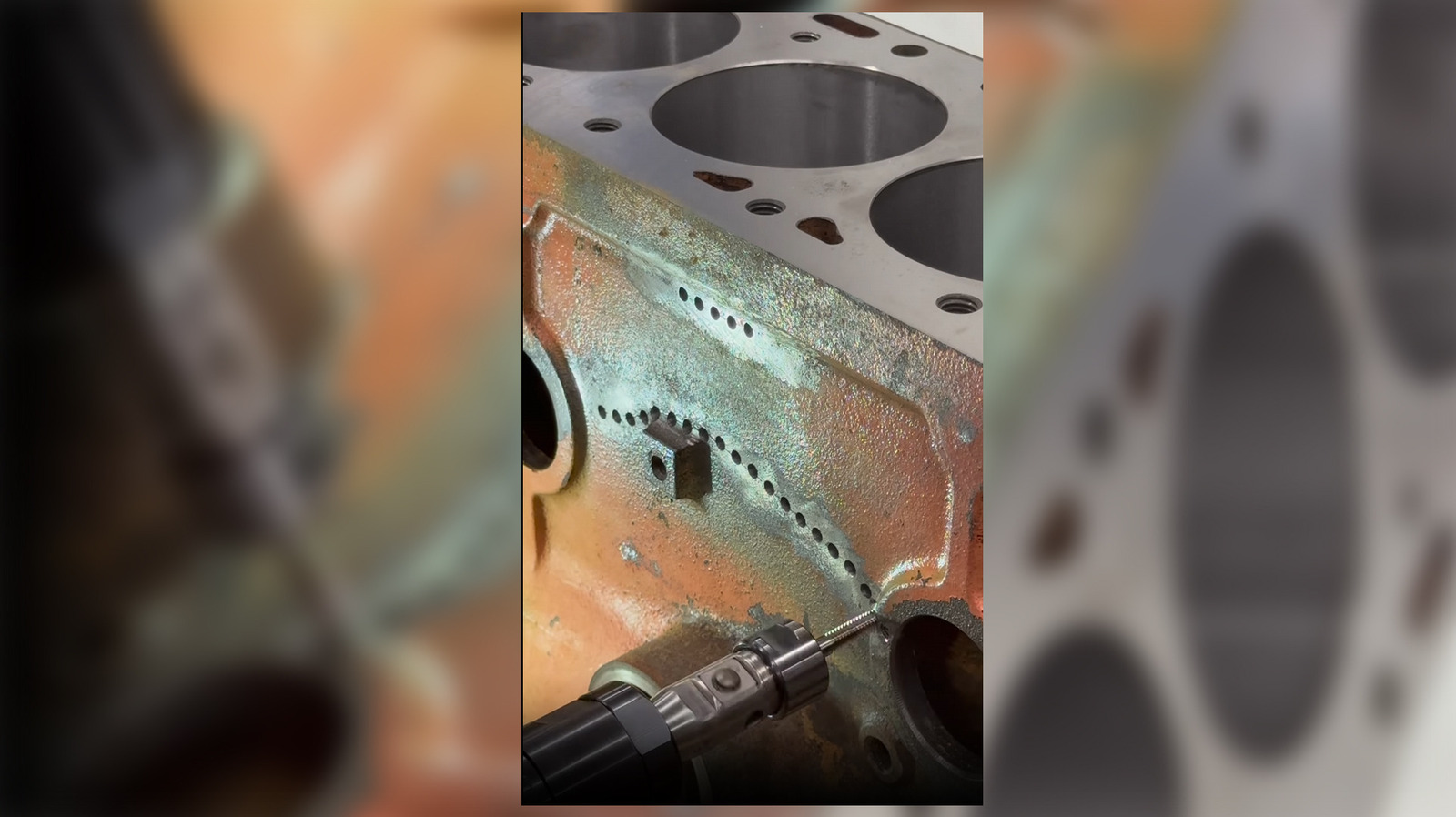
As a certified shadetree motorcycle mechanic, I’ve seen some pretty wild field expedient repairs attempted by previous owners. Typically these are hack jobs so embarrassing — we’re talking things like structural zip-ties here — that I assume whoever carried them out wore a napkin over their head to hide their shame from God during the process. Occasionally, however, I run into a repair so good or inspired that it takes my breath away. That’s exactly what happened when I saw this video come up on my feed recently wherein a machinist fixes a massive crack in an old cast iron engine block with a drill, a handful of bolts, and a tube of red loc-tite.
Syracuse Crank and Machine out of Onondaga County, New York, recently dropped a video on its Facebook page of one of its employees repairing a crack in an old Ford industrial engine block. He didn’t use a welder, however. No heat was involved at all, in fact. Instead of the laborious and delicate process of brazing the old cast iron lump, he stitched the crack closed using a technique called Precision Metal Stitching.
Invented in the late 1930s, metal stitching was developed to repair cast iron equipment out in the Texas oil fields. It’s a cold process — no welding or brazing required — that provides a strong, stress-free repair without the potential warping or disfigurement caused by intense heat. It’s pretty amazing to watch, honestly, and apparently creates a very durable repair.
How it works
So, how do you fix a cracked engine block with a handful of pointy bolts? The guys at Syracuse Crank used the patented Lock-n-Stitch method, so we’ll talk about that. The first step, as it is with all repairs, is to clean up the area around the crack so you can see what you’re doing. Then, using a guide, you drill a bunch of holes along the course of the crack in a crisscross pattern. Once the holes are drilled, you then tap them so the Lock-n-Stitch pins can be threaded in.
The pins are specially made bolts with a tapered end and an extra thick head designed to pull the various parts of a cracked casting together when screwed in. To make sure the repair is both liquid and pressure proof, sealant is applied to the pin’s threads before installing. Once the pins are in, their heads are ground flush and the crack is repaired! Lock-n-Stitch has this to say about the process on its website:
“The repaired, metal-stitched area is gas- and liquid-tight to create a pressure-tight repair. In addition, metal stitching dampens and absorbs compression stresses. It also spreads tensile strains and distributes the load away from the original failure point, while maintaining the alignment of the original surfaces.”
Metal stitching isn’t just for cast iron, either. Lock-n-Stitch claims that its process can be used on ductile iron, steel, aluminum, and even bronze castings. Do yourself a favor and watch the video. It’ll probably be the coolest thing you see all day.

